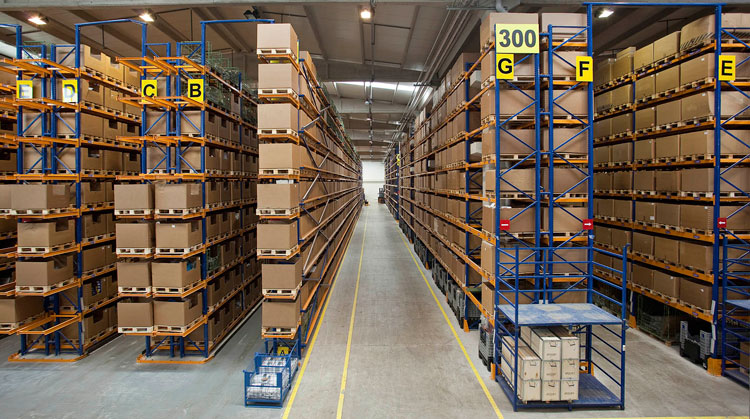When the internet working storage capacity of a warehouse or distribution center surpasses the 85% use level, there is generally a concurrent reduction in warehouse productivity degrees. This is caused by symptoms such as over congested reception and shipping docks, merchandise being staged in operational aisles, commingling of multiple SKUs andor pallets in memory locations causing extra work, etc. Operating aisles and operating aisle widths are a part of the sort of mobile equipment used, the dimensions of pallets being handled, and the pliability need of vehicles to pass within the aisles.
Very narrow aisles are usually in the assortment of 72 – 78 wide. They require the use of specialized turret trucks for pallet storage and handling, andor order selector trucks for collection boxes from vertical storage locations. Since the aisles are very narrow, just one vehicle could work in the aisle anytime that imposes a restriction on the way the facility operates. This operating environment is often employed in buildings where the need for storage density is a very top priority, or when the variety of goods being distributed surpasses the number of pick facings offered at floor level. The use of turret trucks, order choosing trucks, or specialized really narrow aisle articulated forklift trucks is necessary for this kind of very narrow aisle pallet racking system.
Narrow stores are typically in the assortment of 108 to 132. This operating environment is appropriate for electric forklift trucks. Aisle widths can be designed to allow two lift trucks to comfortably pass inside the aisle to support flexible working requirements. Most facilities in North America are based on the use of narrow aisle OS. Wide aisles are usually 156 or higher. These facilities have a tendency to use take a seat counterbalance lift trucks for heavy load handling or to allow a single automobile to perform all unloading, storage, material handling, and loading activities. These operations are common in full pallet environments like in manufacturing or cross-dock operations.
In addition, wide aisles are frequently deployed in combination with drive-in racking systems as the automobile needs to be narrow enough to drive in the warehouse racking system and counterbalance forklift trucks lend themselves to this storage environment. It’s significant to keep in mind that moves from a broad aisle environment to a narrow aisle environment are comparatively easy to do because it primarily involves the replacement of taking a seat counterbalance truck with electric reach trucks and the re-installation of racks. The move from a narrow aisle environment to a really narrow aisle isn’t nearly the same. A really narrow aisle environment imposes significant working constraints on a distribution center and there might be an adverse impact on productivity and throughput capability if VNA is deployed in a building in which flexibility requirements are high.
Post time: Jun-03-2021

